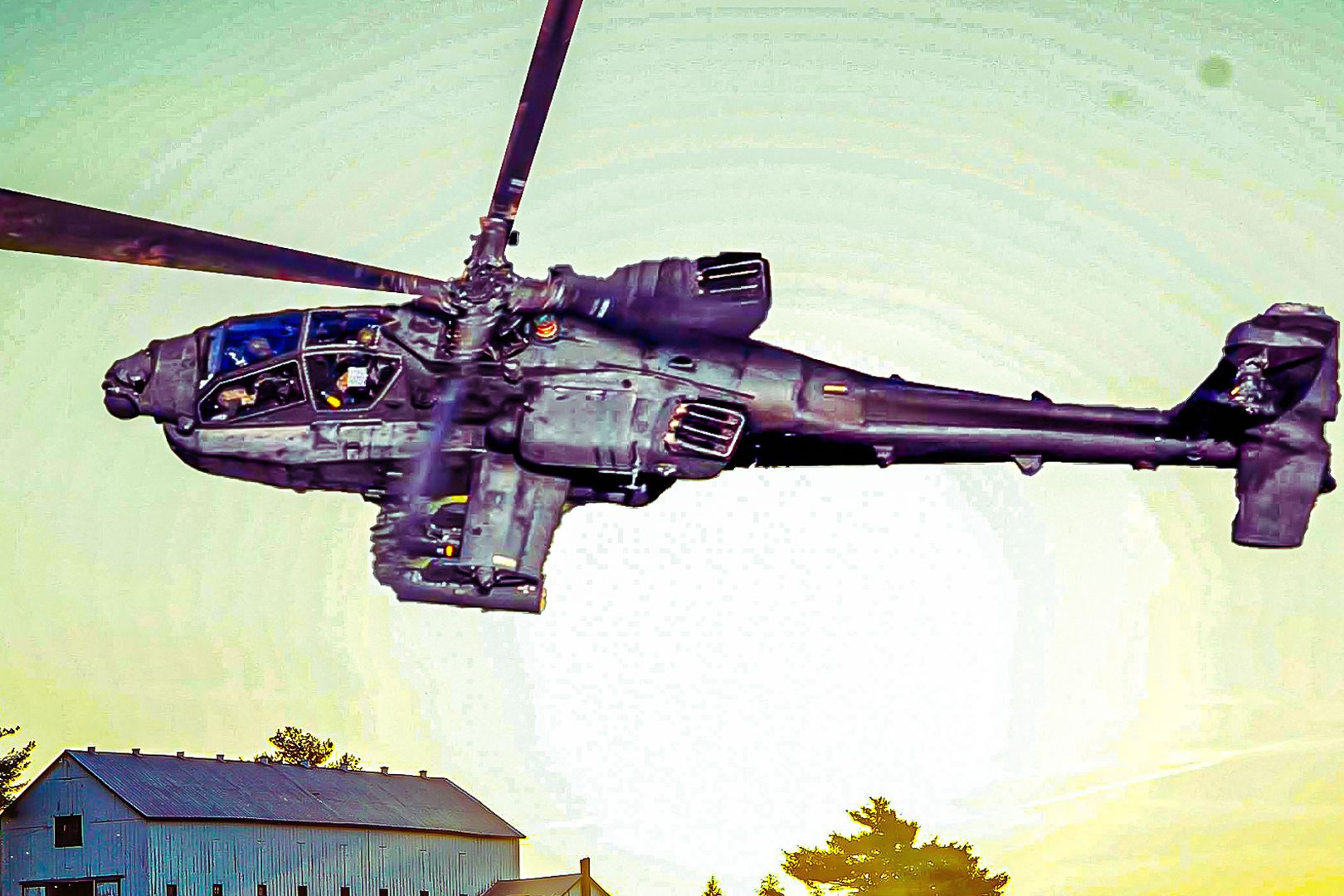Summary The Apache AH-64 serves in frontline ops with advanced sensors and anti-armor systems for precise targeting/support. The AH-64 first saw action in Panama, operating beyond forward lines and participating in over 240 hours of combat. Equipped with advanced systems like IHADSS, TADS, and MTADS to provide close air support to ground forces.
The Boeing AH-64 Apache is a twin turboshaft attack helicopter designed and developed by Boeing Defense, Space & Security in the 1970s. Designed for the United States Army, the Apache AH-64 is equipped with state-of-the-art sensors and anti-armor attack systems for precise targeting and support of ground troops. The US Army's Apaches have served in numerous conflicts, including the Persian Gulf, Panama, Kosovo, Afghanistan, and Iraq.

The helicopter performed its first flight in September 1975 and entered service with the Army in April 1986. The AH-64 Apache is designed to serve in frontline operations both during the day and the night. It provides ground support to friendly forces while keeping its enemies in check through precise targets.
Specialized ground equipment and systems allow the helicopter to precisely use ground-based weapons in all weather conditions, including very low visibility. The Boeing AH-64 Apache Powerplant : 2 x General Electric T700-GE-701 turboshaft engines Power per engine : 1,690 shp. (1,260 kW) each (upgraded to 1,890 shR.
(1,409 kW) T700-GE-701C for AH-64A/D from 1990) Maximum speed : 158 kn (182 mph, 293 km/h) Cruise speed : 143 kn. (165 mph, 265 km/h) Range : 257 NM (296 mi, 476 km) with Longbow radar mast Combat range : 260 NM (300 mi, 480 km) Ferry range : 1,024 NM (1,178 mi, 1,896 km) Service ceiling : 20,000 ft. (6,100 m) The AH-64 Apache first saw action with the US Army during the invasion of Panama, Operation Just Cause.
The Apache's size and capabilities enable it to offer beyond forward line of troops (FLOT) operations that many other helicopters before Apache performed. Its capabilities are based on the systems and configurations generally used by the United States Air Force (USAF), particularly those related to communication and close air support (CAS). The Joint Attack Teams (JAAT) allowed the helicopter operation in line with other aircraft, including the USAF Fairchild Republic A-10 Thunderbolt II and the US Marine Corps (USMC's McDonnell Douglas AV-8B Harrier II During its first combat run in Panama, the AH-64 Apache participated in I over 240 combat hours, both day and night, causing severe damage to ground targets.
The Apache is arguably the world's most effective attack helicopter. We now examine how this chopper was utilized in US military deployments. Apache's Close Air Support (CAS) missions Integrated Helmet and Display Sighting System (IHADSS) Target Acquisition and Designation System (TADS/PNVS)) Lockheed Martin Arrowhead (MTADS) targeting system Pilot Night Vision System Passive Infrared Countermeasures Global Positioning System (GPS) The AH-64 Apache provides support to ground troops through the use of various modern sensors and systems.
The "eyes" of the helicopter lie in the revolutionary Integrated Helmet and Display Sighting System (IHADSS), a helmet-mounted display providing the pilot (or gunner) to slave the AH-64's 30 mm automatic M230 Chain Gun to their helmet. The helmet integration can track the user's head movements to where the user looks and subsequently point to the target. The Chain Gun can also be fixed to a locked firing position or controlled through the Target Acquisition and Designation System (TADS).
Newer AH-64s are equipped with Lockheed Martin's Arrowhead (MTADS) targeting system, which replaces the TADS According to Boeing , "The AH-64E is the most modern configuration of the Apache and is ready for the [Multi-Domain Operations] MDO battlefield. A network-centric, fully integrated weapon system specifically built to dominate in highly contested and complex battle space, the AH-64E Version 6, or v6, Apache includes multiple enhancements to the aircraft's sensors, software, and weapons performance." A detailed look at the AH-64 combat helicopter and its use as a precision instrument of war.
The AH-64 aims to achieve at least one hit for every 30 shots fired at a wheeled vehicle at a range of 2,625 - 3,935 ft (800-1,200 m). In front-line combats, irrespective of the time of the day or weather, the AH-64 Apache's Pilot Night Vision System (PNVS) and the Passive Infrared Countermeasures enable close air support of friendly forces on the ground. Apart from attacking, the AH-64 transports personnel and equipment closer to enemy grounds.
The helicopter can simultaneously locate up to 256 targets within 31 miles (50 km). The Ground Fire Acquisition System (GFAS) An offensive targeting system Infrared cameras to detect muzzle flashes from ground fire Information is routed through the Apache's Aircraft Gateway Processor The location and distance of the shooters are shown on the pilot's display screen The US Army AH-64D Apaches are equipped with a Ground Fire Acquisition System (GAS), which is responsible for detecting and targeting ground-based weapons fire sources. Consisting of two integrated sensor pods and a thermographic camera, the system can precisely perform target detection in all light conditions and within a 120-degree visual field.
Boeing states, “Designed for interoperability within the MDO ecosystem AH-64E v6 is a lethal, survivable and agile system providing the reach, maneuverability and performance needed by ground forces and contributes to current and future joint mission success.” Since 1987, the Apache has played an integral role in conflicts around the world..



















